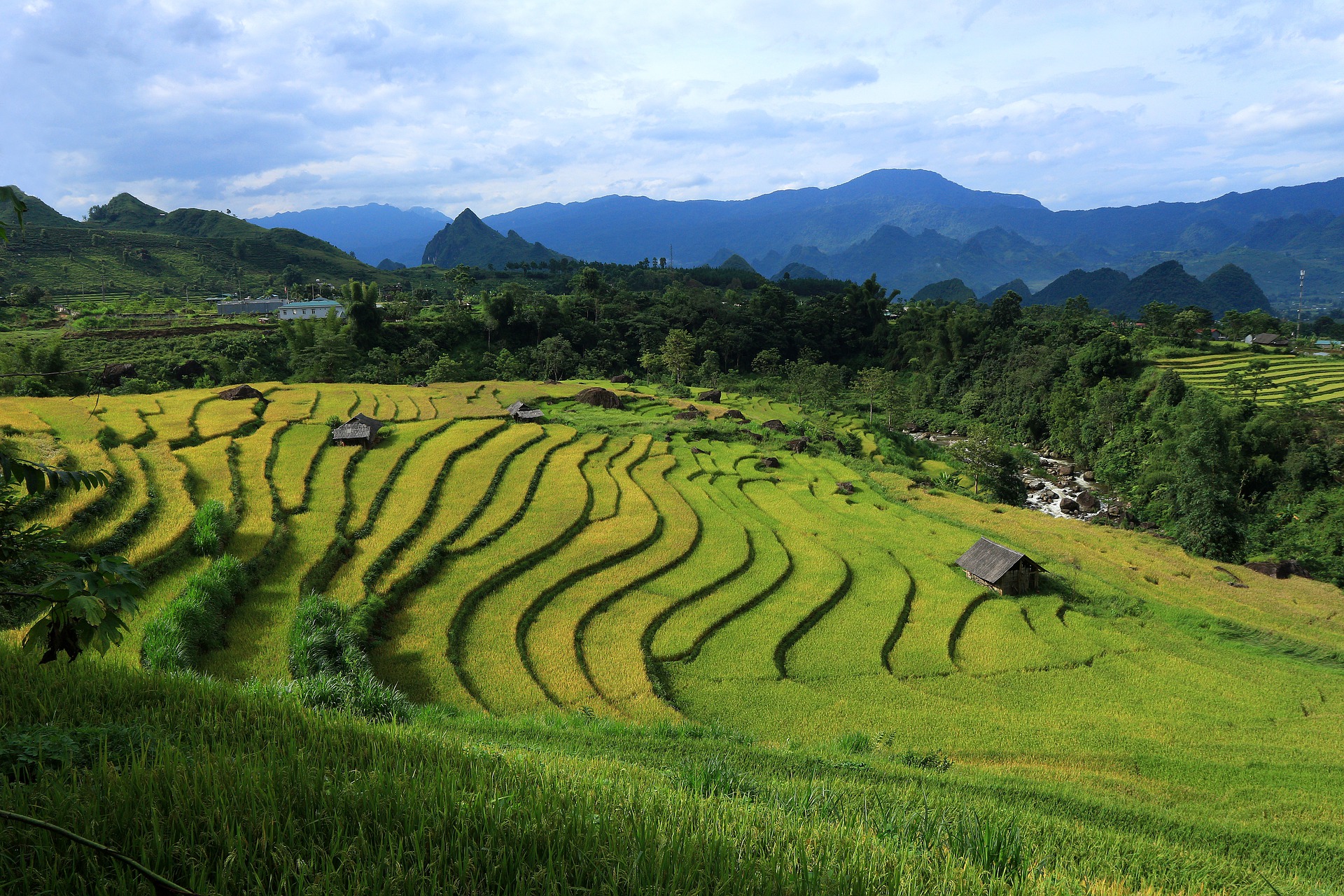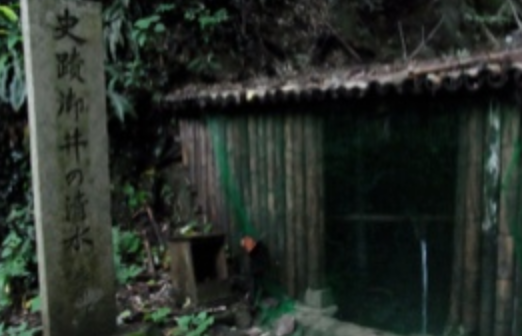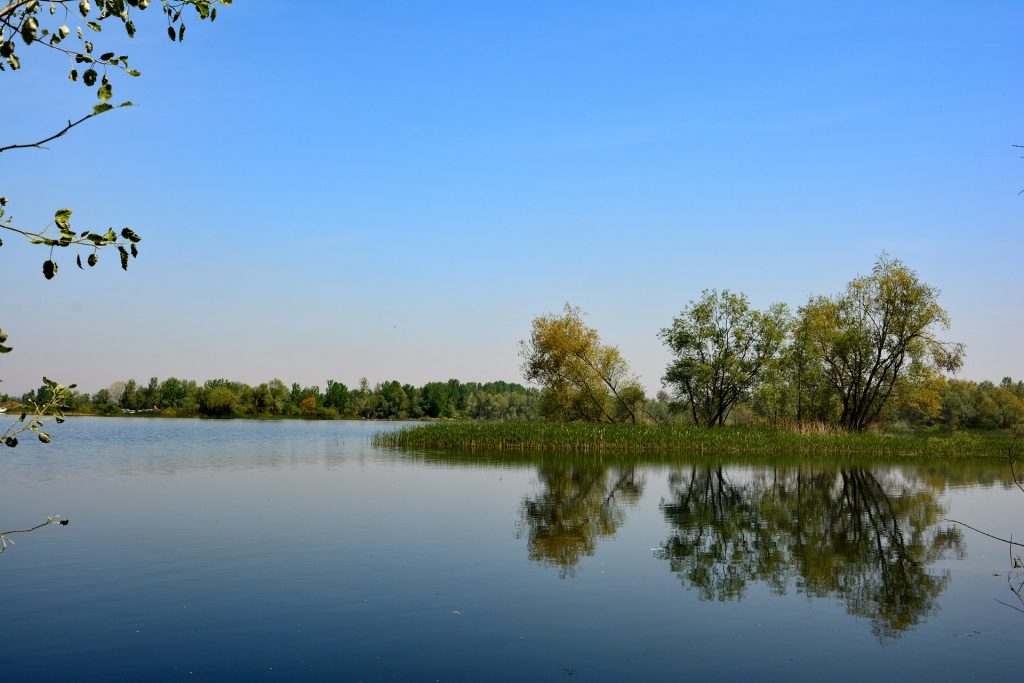
Water and human life
In the northern area of Awaji Island an old spring exists, called Oi no ido (Oi spring, https://www.awaji-web.com/index.php?sightseeing_oinoshimizu). From this spring every morning, fresh water was brought to the emperor 1500 years ago across Osaka bay. The 16th emperor Nintoku was staying in a palace located in the south end of current Osaka city, enjoyed the water, which was described in the first Japanese history book “Kojiki” published in year 712. The northern area of Awaji Island contains granite. Rain is filtrated by passing through the granite layer and contains a lot of minerals, becoming good drinking water. Similar springs of good drinking water are known in Awaji Island for example “Taishi no mizu” (Awaji city) and Hirota spring (South Awaji city).

Here we introduce why we need water for our life based on several topics of water in Awaji Island. Before going to the topics, here from a scientific view, basic points of water are introduced. It is well known that the human body contains a lot of water i.e. about 70 % of our body weight. In water there are many nutrients required for our body including ions. Ions are essential for our body and their concentrations are maintained at certain levels for each. Immunologically essential cells like white blood cells and lymphoid cells in body water (blood and lymphoid water) survey and kill viruses and bacteria infecting our body. Fetus contains water 90 % of their bodies, children 70%, adults 65% but 55% for aged peoples. Therefore, elderly people need more water than younger ones. If you lose 10% of your body water you might suffer body cramps and then lose your muscle activity. If you lose more than 20 % of your body water by heat stroke you might lose consciousness, potentially leading to death. We thus need enough water for a healthy life and be careful to drinking water properly.
A question why water plays an essential role in our body might be raised. A water molecule is composed of hydrogen and oxygen by linking to each other. This structure causes polarization of positive and negative electrical charges in water molecules like a magnet. Various ions and nutrients having electrical polarity within molecules easily bind to water by electrostatic linking. This explains mechanisms of solubility of various materials in water. Water molecules bind each other in this way as well i.e., positive part binds to the negative part of water. At lower temperatures, links of water molecules are tighter than at higher temperatures like at 100 degrees. Under this temperature water molecules become gas “steam”. Based on this nature, water becomes better heat reservoir compared to other liquids on earth and suitable solvent for our body.

As described above various ions like Na+, K+ and Ca2+ essential for our lives are solved in water. We like good mineral water because the minerals (ions) are essential for our body together with water. Taste of various mineral waters commercially available are dependent on balance of contained ions. Content of Mg2+ and Ca2+ in water defines hardness of water. Soft water contains less than 120 mg/l of total Mg2+ plus Ca2+ while hard ones more than that value. A famous European natural spring water “evian” contains 304mg/l Ma2+ plus Ca2+. Most original mineral waters from Japanese spring or rivers are soft water. The hardness levels of these waters are similar to that of public water supplied in the Tokyo metropolitan area. This is even used for production of Sake “Japanese wine made in Tokyo” and commercially available as a souvenir for foreign visitors. Japanese water thus is well known as a good water to drink.
Needless to say, water is essential for agriculture especially for rice production. Since Awaji Island is small, seashore and mountain peaks are close. According to this situation, river water is limited to use for agriculture. To overcome such situation Awaji people constructed many artificial ponds called “tame-ike” for keeping water as a reservoir. Their number is about 10,000, half of Hyogo prefecture’s total (https://web.pref.hyogo.lg.jp/nk11/tameikedetabase.html. 1700 year old “Tame-ike” was found in a ruin of South Awaji city together with a rice field at that time. Tame-ike seems to be essential for Awaji Island for such a long time. In Yedo period agricultural production expanded and about 30 % of current Tame-ike were built and others were after the Meiji period (150 years ago). One of the three big “Tame-ike” called Taki-ike in Awaji constructed in Yedo period took 10 years to construct.

According to a study of village history of Shibahara in Toyonaka City Osaka by Professor Michihiro Kita of Osaka University School of Engineering (http://www.dma.jim.osaka-u.ac.jp/view?l=ja&u=7752), this village was founded by surrounding a Tame-ike to get water for the rice fields there during the Yedo period. At the northern end of this village a big tomb area still exits with a crematorium which existed there since the beginning of the village more than 100 years ago. As shown in this study, many Japanese villages were founded with “Tame-ike” and a village community has been organized to maintain the functionality of the “Tame-ike”. If you like to start agriculture in a local Japanese area, you need to become a member of this community. This might not be easy to understand for people living in big cities.
In terms of water of Awaji Island, sea water is another important thing for Awaji life. In the northern sea area of Awaji Island, sea weed “nori”, a favorite food for Japanese is produced by artificial cultivation in shallow sea water during winter season. Fisher men for “nori” production report serious problems in terms of the color of “nori” and production level of “nori”. The production level is decreasing and the typical valuable color “black” is changing to green. These problems are caused by the nutrient levels for “nori” and fish in the sea water are becoming fewer, while the sea itself becomes cleaner and more transparent (Cultural oligotrophication, T. Yamamoto, Journal of the JIME (2014) 49, p72). During the economic growth in the years of 1960 to 1970, the Seto Inland Sea was heavily polluted by increased industrial and daily-life waste of the people in the western Japanese areas https://www.env.go.jp/water/heisa/seto_comm.html. Then Japanese government established an anti-pollution law for this area. Because of this law, the Inland sea became cleaner and less polluted. The level of concentrations of phosphorus and organic materials indicated by COD (chemical oxidation level as an index of pollution) became about 1/4 compared to those levels before establishing the law, leading to cause lower levels of nutrients in the sea for “nori” and fish. This less nutrient level of sea water was also caused by more protection of river banks from over flow of water from mountains containing a lot of mud and nutrients. Less cleaning of “tame-ike” along with reduced rice production caused by people’s aging also caused the lower nutrient levels in the sea. Agriculture and fishery section of Awaji city is trying now to improve the sea nutrition levels (https://www.city.awaji.lg.jp/soshiki/nourin/). One idea seems to be more frequent cleaning of “tame-ike” reservoirs of Awaji Island.
A beautiful seashore in the southern Awaji Island “ Keino-matsubara seashore” (https://www.awajishima-kanko.jp/manual/detail.php?bid=19) recommended as one of the best 100 seashores of Japan has a trouble because the sea shore width is becoming narrower compared to that of 10 years ago. This is caused by increased level of sea water caused by earth green-house effect and also by less supply of mud in the river water as described above. In a summary of the topic regarding water and life, we realize necessity of considering a wider aspect to maintain good environment of Awaji Island in our future.
